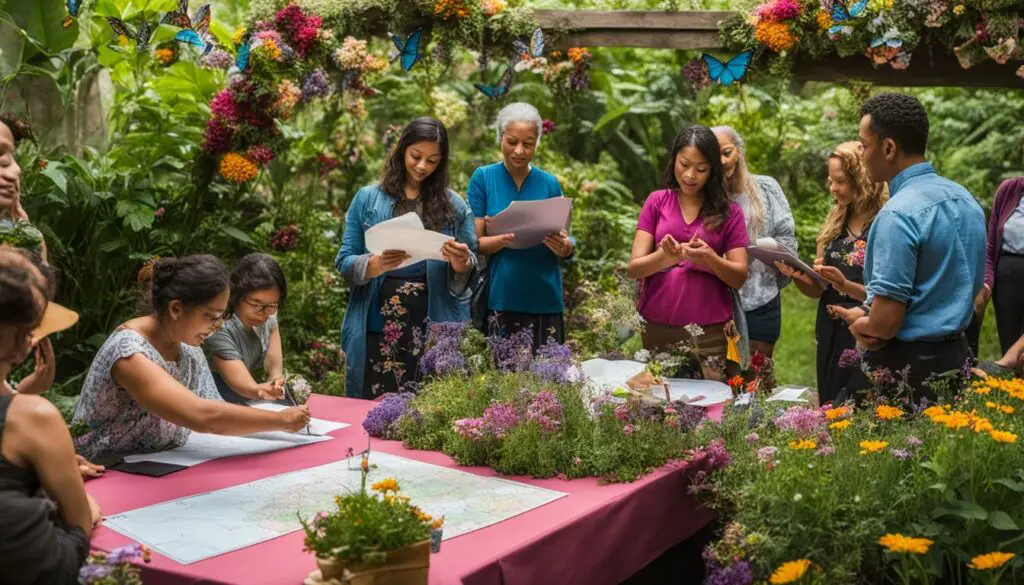Welcome to my expert guide on butterfly release event planning. Butterfly releases have gained popularity in recent years, bringing a symbolic and visually stunning element to various events. In this guide, I will provide you with expert advice on how to plan a butterfly release ceremony that will create a magical and eco-friendly experience for all.
Key Takeaways:
- Planning a butterfly release event adds a unique and enchanting touch to any occasion.
- Consider incorporating butterfly release ideas and a butterfly-themed event to create a cohesive atmosphere.
- Outdoor event planning is crucial for a successful butterfly release ceremony.
- Collaborating with an experienced event planner can ensure a smooth and memorable butterfly ceremony.
- Embrace the beauty of butterflies while keeping an eco-friendly mindset for a sustainable release.
Why Choose Butterfly Releases
Butterfly releases are an eco-friendly choice for events due to several reasons. By releasing native butterfly species, you contribute to the preservation of local ecosystems. Ethical breeding practices ensure the well-being of butterflies, and biodegradable containers minimize environmental impact. Furthermore, butterfly releases provide educational opportunities and support local economies.
When you choose butterfly releases, you actively participate in the preservation of native species and the protection of local ecosystems. Releasing butterflies that are native to the region ensures that they are well-suited to the local environment. These butterflies have evolved over time to thrive in their specific habitats, reducing the risk of ecological disruption and promoting biodiversity.
Ethical breeding practices are a key aspect of butterfly releases. Responsible butterfly release companies prioritize the health and well-being of butterflies. They engage in sustainable breeding practices to maintain healthy populations and meet the demand for butterfly releases without risking harm to wild populations. By supporting these companies, you contribute to the conservation of butterflies and their habitats.
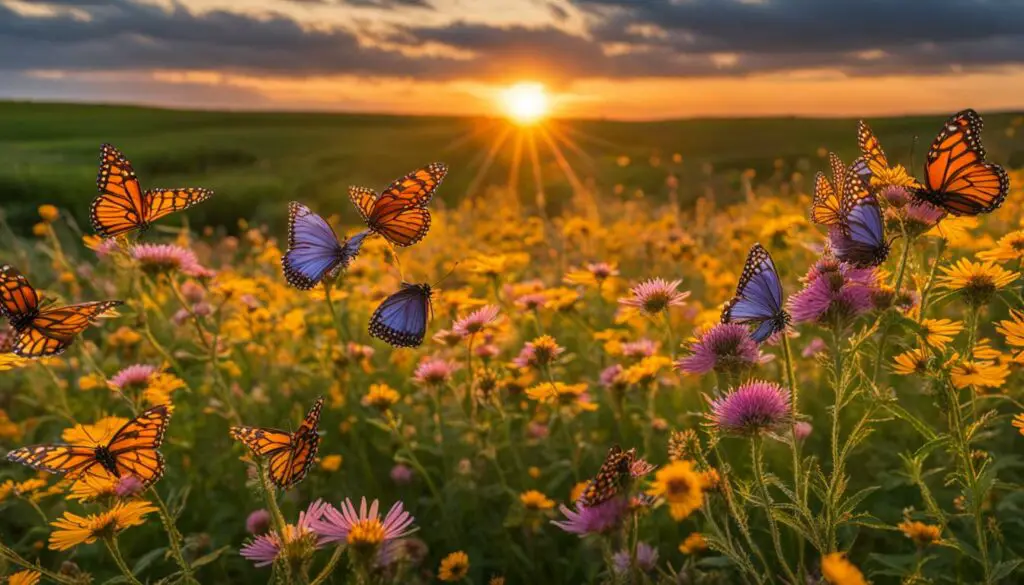
Butterfly releases also have a reduced environmental footprint compared to traditional celebratory practices. Unlike fireworks, which contribute to air and noise pollution, butterfly releases are silent and chemical-free. This makes them a more sustainable option for adding beauty and symbolism to events. Additionally, the use of biodegradable containers further minimizes waste and ensures a sustainable release.
Moreover, butterfly releases offer educational opportunities for participants. They raise awareness about the importance of native species preservation and engage individuals in conservation efforts. Observing butterflies in their natural habitat can inspire a sense of wonder and foster a deeper connection to the environment. By choosing butterfly releases, you not only create memorable experiences but also promote environmental education and stewardship.
Benefits of Native Species Preservation
Preserving native species is crucial for maintaining the balance and health of local ecosystems. Native butterflies, in particular, play a vital role in pollination and contribute to the overall biodiversity of their habitats. By releasing native species during butterfly release events, we can actively support their preservation and reduce the risk of ecological disruption.
Native butterfly species are well-suited to their local ecosystems. Over time, they have evolved and adapted to the specific conditions of their surroundings. This adaptation ensures that they are efficient pollinators and have strong relationships with native plants for reproduction. Releasing these butterflies into their natural habitats helps maintain the delicate balance of local flora and fauna.
Preserving native species also promotes biodiversity. Each species has its own unique role in the ecosystem, and the loss of even one species can have far-reaching consequences. By releasing native butterflies, we contribute to the overall diversity of the environment, ensuring a thriving and resilient ecosystem for future generations.
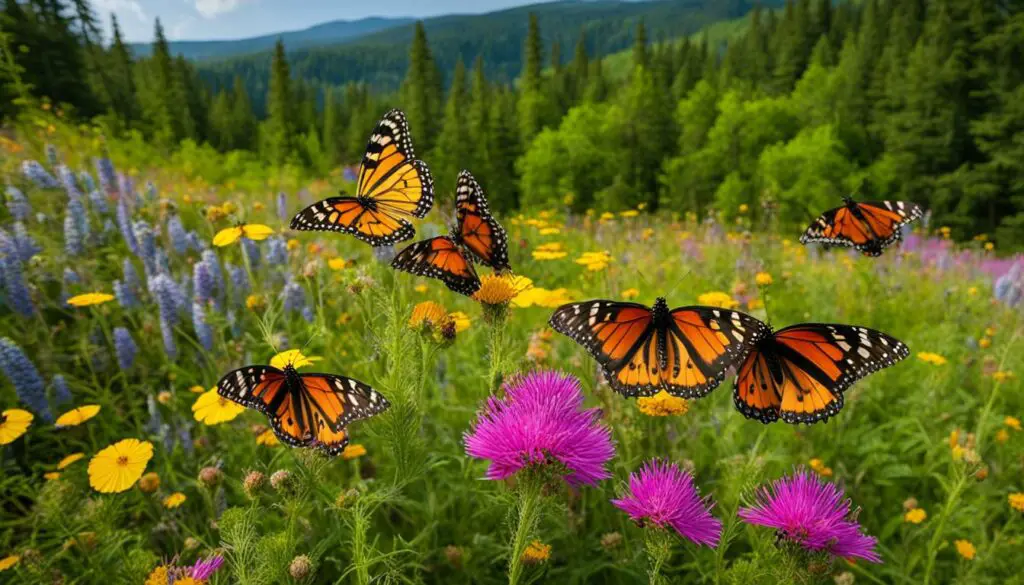
Table: Native Species Preservation and Ecosystem Benefits
| Benefit | Description |
|---|---|
| Pollination | Native butterflies act as important pollinators, facilitating plant reproduction and ensuring the survival of various plant species. |
| Ecosystem balance | Releasing native butterflies helps maintain the delicate balance of local ecosystems, supporting the health of both flora and fauna. |
| Conservation of native plants | Native butterflies rely on specific plants for reproduction and food sources. By preserving native species, we indirectly protect these plants and help maintain their populations. |
| Biodiversity | Native species preservation promotes biodiversity, ensuring a rich and varied range of organisms in the ecosystem. |
| Education and awareness | Releasing native butterflies provides opportunities for education and raising awareness about the importance of preserving local ecosystems and species. |
By prioritizing native species preservation in butterfly release events, we contribute to the ecological well-being of our surroundings. It is through these mindful actions that we can create a positive impact on our environment and foster a sustainable future.
Role of Butterflies in Supporting Local Ecosystems
Butterflies play a crucial role in supporting local ecosystems as important pollinators. These delicate creatures contribute to plant reproduction by transferring pollen from one flower to another, aiding in fertilization and fruit production. As they flutter from flower to flower in search of nectar, they inadvertently pick up and deposit pollen, allowing plants to reproduce and ensure the continuation of their species.
By engaging in this pollination process, butterflies promote biodiversity within their habitats. Different butterfly species are often attracted to specific types of flowers, leading to a diverse array of pollination interactions. This diversity is essential for maintaining a healthy ecosystem, as it helps support a wide variety of plant species and the animals that depend on them for food and habitat.
Furthermore, as butterflies visit various plants in their search for nectar, they inadvertently transfer pollen over long distances. This interconnection between different plants helps to increase genetic diversity and resilience within plant populations, allowing them to adapt and thrive in changing environmental conditions. In this way, butterflies act as important agents of dispersal and contribute to the overall resilience and stability of local ecosystems.

Table: Examples of Butterfly-Pollinated Plants
| Butterfly Species | Plants Pollinated |
|---|---|
| Monarch | Milkweed, Butterfly Bush, Goldenrod |
| Swallowtail | Parsley, Dill, Fennel, Queen Anne’s Lace |
| Painted Lady | Thistle, Hollyhock, Aster |
As shown in the table, different butterfly species have specific preferences for certain plant species. By facilitating the pollination of these plants, butterflies contribute to their reproductive success and help maintain the delicate balance of local ecosystems.
Importance of Ethical Breeding Practices
When it comes to butterfly releases, it is crucial to emphasize the importance of ethical breeding practices. Responsible butterfly release companies prioritize the health and well-being of butterflies, ensuring they are reared in controlled environments. This approach not only guarantees the safety of the butterflies but also maintains sustainable breeding populations.
By partnering with these ethical breeding companies, event organizers can be confident that their butterfly releases are conducted in a manner that aligns with the principles of conservation and environmental responsibility. It is essential to support companies that are committed to preserving the natural habitats of butterflies and minimizing any negative impact on wild populations.
Through sustainable breeding practices, these companies play a vital role in ensuring the long-term viability of butterfly species. By working closely with experts in the field, they adhere to scientific guidelines and contribute to ongoing conservation efforts. This dedication to ethical breeding practices helps to create a harmonious balance between butterfly releases and the preservation of butterfly populations in the wild.
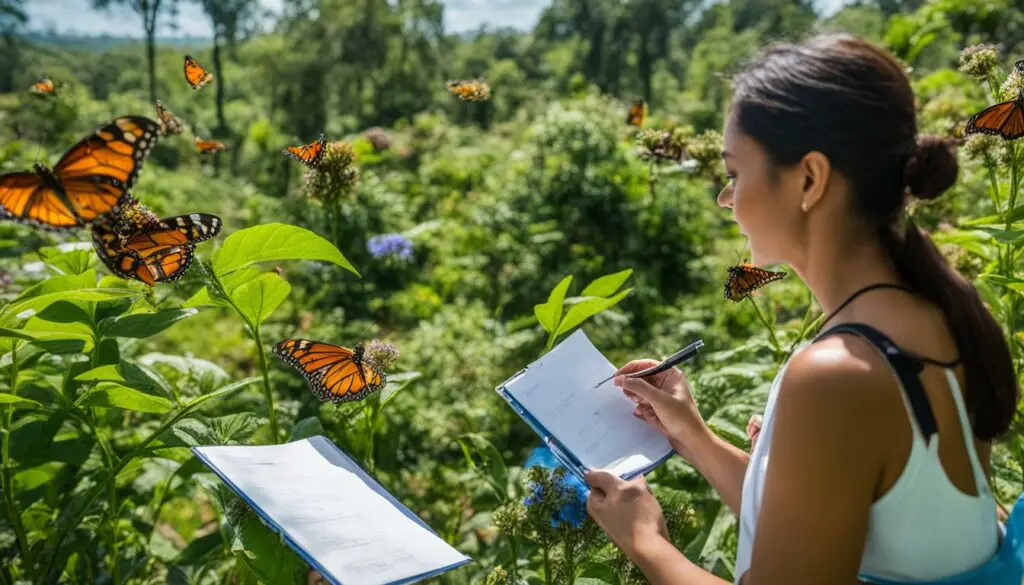
Promoting Conservation Through Responsible Practices
While butterfly releases offer a beautiful and symbolic experience, it is our responsibility to ensure that these events have a positive impact on butterfly populations and their ecosystems. By working with responsible butterfly release companies, we can collectively promote conservation and support sustainable breeding practices. Together, let’s celebrate the beauty of butterflies while safeguarding their future.
Environmental Benefits of Butterfly Releases
When it comes to celebrating or memorializing special occasions, butterfly releases offer a unique and environmentally friendly alternative. Unlike traditional practices like fireworks, butterfly releases have a reduced environmental footprint. They are a sustainable option that is chemical-free and provides a silent alternative. By incorporating butterfly releases into your events, you can create a magical experience while also demonstrating a commitment to the planet.
Fireworks, while visually stunning, can have detrimental effects on the environment. They release harmful chemicals into the air, contributing to pollution and compromising air quality. In contrast, butterfly releases are free from chemicals and do not generate noise pollution. This makes them a more eco-conscious choice, allowing you to celebrate with nature in a gentle and sustainable way.
“Butterfly releases offer a unique and environmentally friendly alternative to traditional practices like fireworks.”
Additionally, butterfly releases can serve as a powerful reminder of the delicate balance of nature. They highlight the importance of preserving native species and their habitats, promoting a deeper understanding and appreciation for the environment. By choosing a butterfly release, you are actively participating in the conservation of butterflies and their ecosystems.
Next time you plan a special event, consider the environmental benefits of a butterfly release. It not only adds a touch of magic but also provides a sustainable option that is chemical-free and emits no noise pollution. Let the beauty of butterflies inspire you to create an unforgettable and environmentally friendly experience.
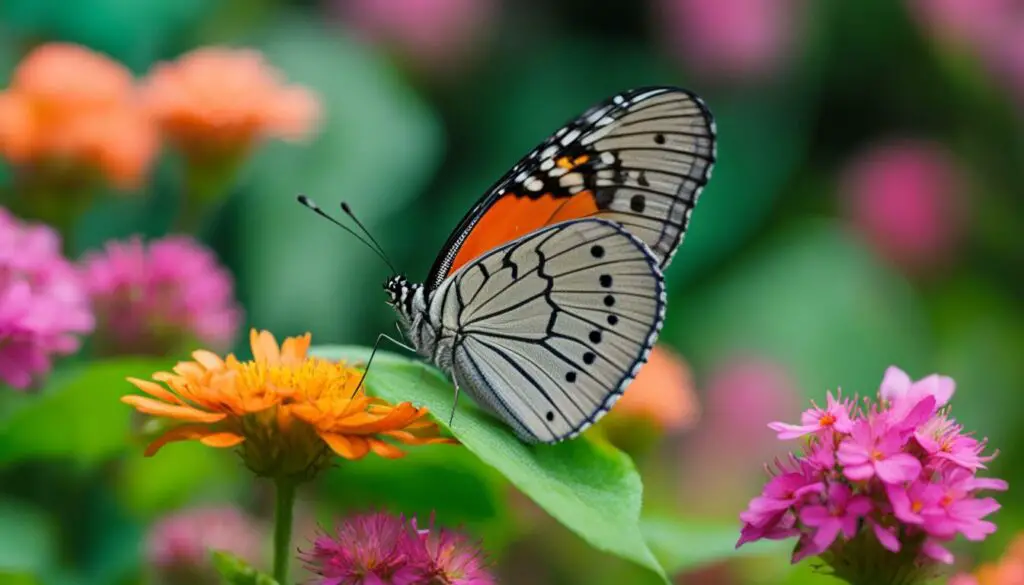
Educational Opportunities of Butterfly Releases
Butterfly releases offer unique educational opportunities for participants, allowing them to gain awareness about the importance of preserving native species and ecosystems. Observing butterflies in their natural habitat serves as a powerful way to engage individuals in conservation efforts and promote environmental stewardship.
By witnessing the delicate beauty of butterflies and learning about their life cycles, participants can develop a deeper understanding of the intricate connections between species and ecosystems. This firsthand experience fosters a sense of wonder and curiosity, inspiring a desire to protect these fragile creatures and their habitats.
Furthermore, butterfly releases provide a platform for educational discussions and activities. Event organizers can collaborate with local experts, such as entomologists or environmental educators, to conduct interactive workshops, presentations, or guided tours. These educational components enhance the overall experience, offering participants a chance to explore topics such as native species preservation, pollination, and the importance of biodiversity.
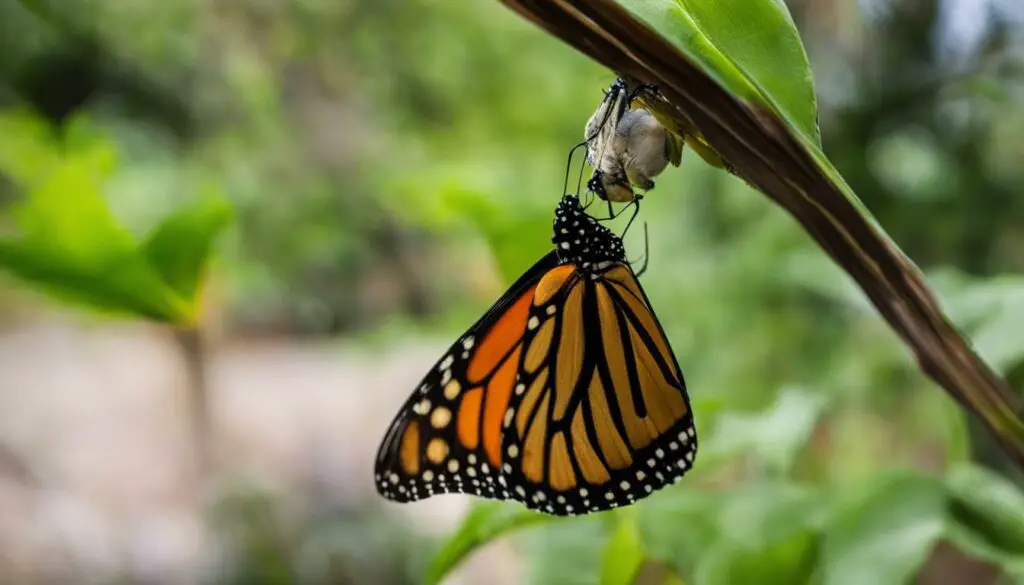
Engagement in Conservation Efforts
Participating in butterfly releases can encourage individuals to actively contribute to conservation efforts. The experience of releasing butterflies into the wild creates a personal connection with nature, motivating participants to take steps towards protecting the environment. They may be inspired to create butterfly-friendly gardens, support local conservation organizations, or spread awareness among their communities.
Additionally, educational initiatives that accompany butterfly releases can empower participants to become ambassadors for nature. Armed with knowledge and a passion for butterfly conservation, they can share their experiences and educate others about the importance of preserving native species and their habitats. This ripple effect can lead to a broader conservation movement, with individuals working together to create positive change.
| Educational Opportunities of Butterfly Releases | Engagement in Conservation Efforts |
|---|---|
|
|
Biodegradable Containers for Butterfly Releases
When planning a butterfly release event, it’s crucial to consider the environmental impact of the containers used to transport and release the butterflies. Opting for biodegradable containers is an eco-friendly choice that minimizes waste and ensures a sustainable release.
Biodegradable containers are designed to break down naturally over time, reducing the amount of waste that ends up in landfills. By using these containers, you can contribute to a more environmentally conscious event and demonstrate your commitment to sustainability.
Not only do biodegradable containers minimize waste, but they also have a minimal impact on the ecosystem. Unlike traditional plastic containers, which can take hundreds of years to decompose, biodegradable containers break down relatively quickly, releasing nutrients back into the soil and supporting natural processes.
Benefits of Biodegradable Containers
- Minimize waste and reduce environmental impact
- Promote sustainability and eco-consciousness
- Support natural processes and nutrient cycling
- Demonstrate a commitment to responsible event planning
“Using biodegradable containers for butterfly releases is not only a sustainable choice but also a beautiful way to honor nature and create a memorable event.” – Event Planning Expert
| Container Type | Material | Breakdown Time | Environmental Impact |
|---|---|---|---|
| Plant-based containers | Bioplastic or cellulose-based materials | Approximately 3 to 6 months | Low impact; decomposes into organic matter |
| Paper containers | Recycled or natural paper materials | Approximately 2 to 4 months | Minimal impact; easily recyclable or compostable |
| Cardboard containers | Recycled cardboard materials | Approximately 3 to 6 months | Low impact; easily recyclable or compostable |
Choosing the right biodegradable container depends on various factors, including your event’s theme, budget, and personal preferences. Consult with your butterfly release provider to determine the best option for your specific event and ensure a sustainable and environmentally friendly release.
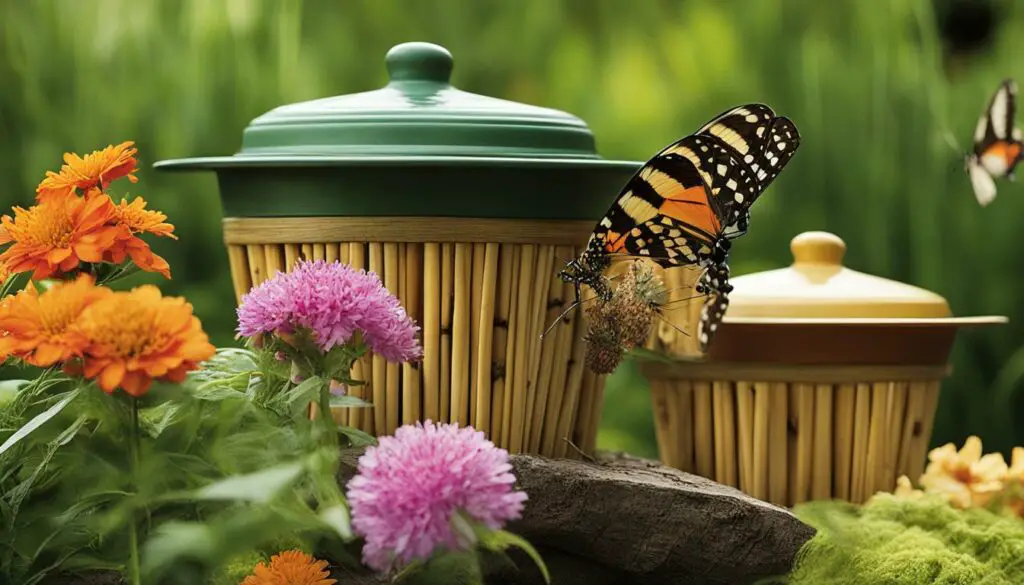
Local Economic Benefits of Butterfly Releases
When planning a butterfly release event, it’s important to consider the local economic benefits that come with supporting local butterfly release companies. By choosing to collaborate with these experts in the field, you not only contribute to the success of your event but also foster a sense of community and environmental responsibility.
Local butterfly release companies often have established relationships with local breeders and conservation organizations, ensuring that you are working with knowledgeable professionals who prioritize sustainable breeding practices. These collaborations help to promote the well-being of butterflies and maintain a healthy population, benefiting the local ecosystem.
Moreover, by supporting local businesses, you are investing in the local economy. Butterfly releases create demand for services such as breeding, transportation, and event planning, providing employment opportunities and boosting the economic growth of the community. These economic benefits extend beyond the immediate event and contribute to the long-term sustainability of the region.
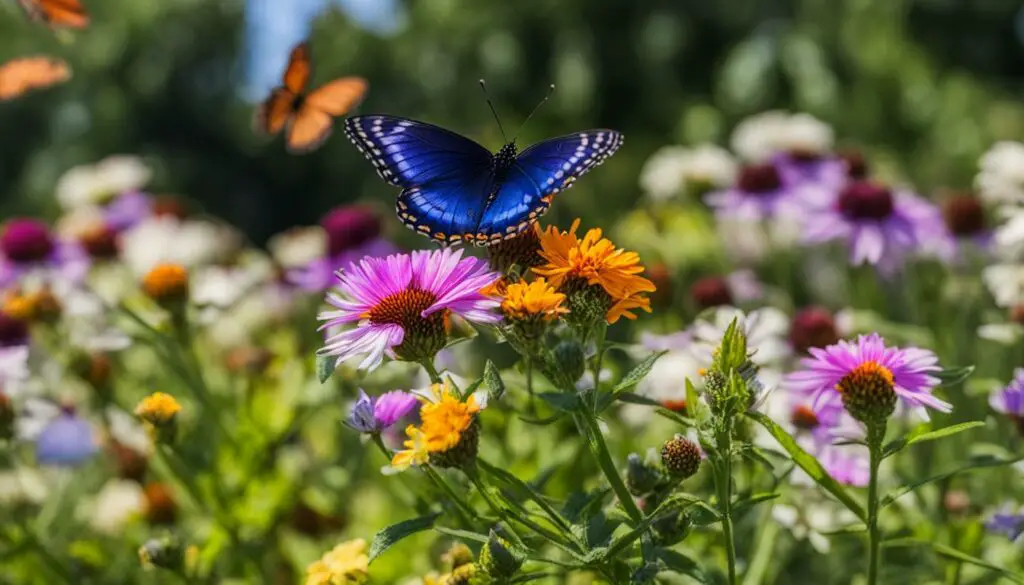
Collaboration with Experts and Conservation Efforts
Choosing to work with local butterfly release companies also allows you to tap into their expertise and experience. These professionals have a deep understanding of native butterfly species and their ecological significance. They can provide valuable insights and recommendations for creating a successful and impactful butterfly release event.
Furthermore, supporting local butterfly release companies often means supporting their conservation efforts. These businesses are passionate about preserving native species and their habitats. By choosing to collaborate with them, you contribute to the ongoing conservation efforts in the area, ensuring that future generations can continue to enjoy the beauty and benefits of these delicate creatures.
In conclusion, when planning a butterfly release event, consider the local economic benefits of supporting local butterfly release companies. By collaborating with experts and contributing to conservation efforts, you not only create a magical experience but also play a role in nurturing the local ecosystem and fostering a sense of community and environmental responsibility.
Tips for Environmentally Friendly Butterfly Releases
To ensure an environmentally friendly butterfly release, it’s important to make informed decisions every step of the way. Here are some tips to help you plan a responsible and eco-conscious event:
- Choose a reputable provider: When selecting a butterfly release company, look for one that follows ethical breeding practices and prioritizes native species. This ensures that the butterflies are healthy and well-suited to the local ecosystem.
- Coordinate with local experts: Consulting with entomologists or ecologists in your area can provide valuable insights and guidance. They can help you select the most suitable butterfly species for your region and ensure that the release is conducted responsibly.
- Select a suitable release location: Consider hosting the butterfly release in a garden or natural reserve where butterflies can find suitable habitat and food sources. This will increase their chances of survival and contribute to the local ecosystem.
- Educate participants: Take the opportunity to educate event participants about the ecological importance of native butterflies. Share information about the benefits of butterfly releases, native species preservation, and the role of butterflies as pollinators.
By following these tips, you can plan an environmentally friendly butterfly release that supports native species, promotes biodiversity, and encourages conservation efforts. Let’s create magical moments while protecting our planet!
Captivating the Beauty of Nature
“Releasing butterflies into their natural habitat is like setting free a piece of art.” – Unknown
As we embark on the journey of planning a butterfly release event, let us not forget the awe-inspiring beauty of nature. The delicate flutter of butterfly wings and their vibrant colors bring joy and wonder to any occasion. But it’s not just about their visual appeal. Butterflies play a crucial role in supporting local ecosystems as pollinators and contributing to plant reproduction. By organizing an environmentally friendly butterfly release, we create a harmonious celebration that respects the delicate balance of nature.
| Environmentally Friendly Release | Unethical Release | |
|---|---|---|
| Impact on local ecosystems | Supports local flora and fauna | Potential disruption and imbalance |
| Environmental footprint | Minimal waste and no harmful chemicals | Environmental pollution |
| Breeding practices | Ethical and sustainable | Potential harm to butterfly populations |
| Educational value | Raises awareness about conservation | No educational impact |
Let us strive to create an event that not only captivates the beauty of nature but also leaves a positive impact on our environment. By choosing reputable providers, coordinating with local experts, selecting suitable release locations, and educating participants, we can ensure that our butterfly releases are not only visually stunning but also environmentally responsible.

Remember, these delicate creatures deserve our utmost care and respect. Together, let’s celebrate their beauty and contribute to the preservation of our natural world.
Conclusion
In conclusion, planning a butterfly release event can be a rewarding and eco-friendly choice. By prioritizing native species preservation and supporting local ecosystems, we can create magical experiences while contributing to the health of our environment.
Choosing a reputable provider that follows ethical breeding practices and provides biodegradable containers is essential for reducing our environmental footprint. Additionally, butterfly releases offer educational opportunities, raising awareness about the importance of conservation and engaging participants in efforts to protect our natural world.
Not only are butterfly releases a beautiful way to celebrate special occasions, but they also have positive local economic benefits. Supporting local butterfly release companies fosters a sense of community and collaboration, ensuring that we are working together towards a sustainable future.
So, when planning your next event, consider a butterfly release with an eco-conscious mindset. Let’s embrace the beauty of these delicate creatures while nurturing the planet we call home. Together, we can make every butterfly release an unforgettable and environmentally friendly experience.
FAQ
Are butterfly releases environmentally friendly?
Yes, butterfly releases are an eco-friendly choice. By releasing native butterfly species, you contribute to the preservation of local ecosystems. Ethical breeding practices ensure the well-being of butterflies, and biodegradable containers minimize environmental impact.
How do butterfly releases support local ecosystems?
Butterfly releases contribute to the balance of local flora and fauna by aiding in plant reproduction as pollinators. Releasing butterflies into the wild helps maintain healthy ecosystems and supports biodiversity.
What are ethical breeding practices for butterflies?
Responsible butterfly release companies prioritize ethical breeding practices. They rear butterflies in controlled environments, ensuring their health and well-being. These companies are committed to maintaining sustainable breeding populations to meet demand without harming wild populations.
How do butterfly releases compare to traditional practices like fireworks?
Butterfly releases have a lower environmental footprint compared to traditional practices like fireworks. They are silent and chemical-free, making them a more sustainable option.
What educational opportunities do butterfly releases offer?
Butterfly releases raise awareness about the importance of preserving native species and ecosystems. They provide an opportunity to observe butterflies in their natural habitat, inspiring individuals to become more engaged in conservation efforts.
What are biodegradable containers for butterfly releases?
Many butterfly release companies provide biodegradable containers for transporting and releasing the butterflies. These containers are designed to break down naturally, minimizing waste and reducing environmental impact.
How do butterfly releases support the local economy?
Supporting local butterfly release companies contributes to the local economy. These businesses often collaborate with experts in the field and engage in conservation efforts, fostering a sense of community and environmental responsibility.
How can I ensure an environmentally friendly butterfly release?
To ensure an environmentally friendly butterfly release, it’s essential to choose a reputable provider that follows ethical breeding practices and prioritizes native species. Consulting with local entomologists or ecologists can help ensure the release is conducted responsibly. Selecting a suitable location, such as a garden or natural reserve, and educating participants about the ecological importance of native butterflies are also crucial steps.
Why should I choose butterfly releases for my event?
Butterfly releases add a touch of magic to special occasions while contributing positively to local ecosystems. They are an eco-friendly choice that supports native species preservation, promotes biodiversity, and offers educational opportunities. Additionally, butterfly releases have a lower environmental footprint compared to traditional practices like fireworks.

